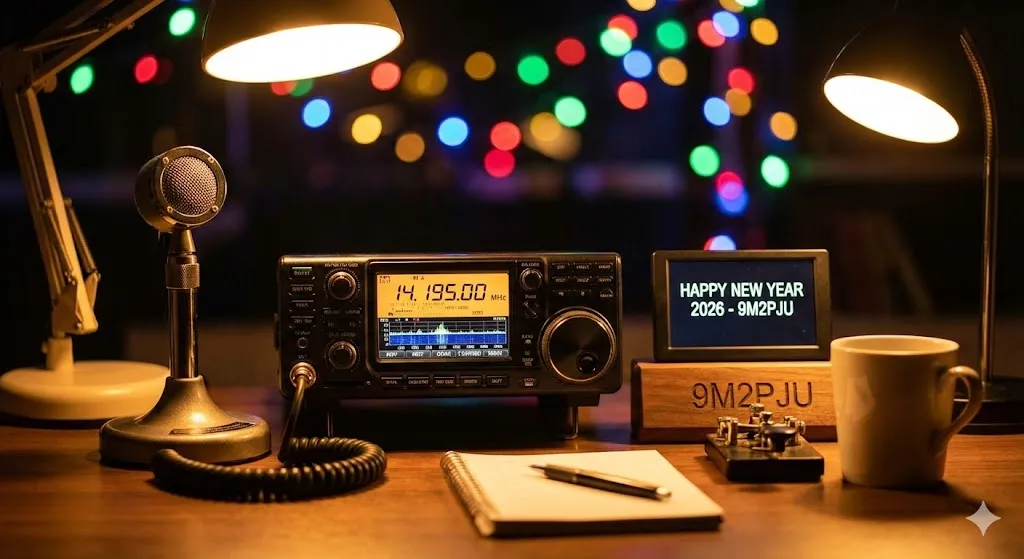Scaling New Heights: A Comprehensive Guide to SOTA Activations, Log Submission, and Safety
Introduction:
Summits on the Air (SOTA) is an exhilarating outdoor activity that combines hiking, mountaineering, and amateur radio communication. Whether you’re an experienced hiker or a radio enthusiast seeking a new adventure, this guide will take you through the essential steps of planning and executing a successful SOTA activation. Additionally, it emphasizes the importance of reading guidelines and manuals, ensuring your safety, and accurately submitting your log for validation.
- Understanding SOTA:
Summits on the Air is an award scheme that encourages amateur radio operators to reach designated summits and make radio contacts from these elevated locations. Each summit has a specific point value based on its elevation, contributing to a participant’s overall SOTA score. - Reading Guidelines and Manuals:
Before embarking on a SOTA activation, it is crucial to thoroughly read and understand the official SOTA guidelines and manuals. These resources provide essential information on rules, permitted frequencies, operating procedures, safety considerations, and log submission requirements. Familiarize yourself with these guidelines to ensure a compliant and successful activation. - Planning Your SOTA Activation:
a. Choose a Summit: Research the available summits in your region using the SOTA website. Consider factors such as elevation, accessibility, hiking difficulty, and personal fitness level when selecting a summit for your activation.
b. Check Regulations: Be aware of any specific regulations or restrictions that apply to your chosen summit. Some summits may require permits or have limited access during certain seasons. Comply with all rules and guidelines to ensure a positive experience.
c. Study the Route: Obtain topographic maps, trail descriptions, and other relevant information about the hiking trail or approach to the summit. Assess the trail’s difficulty, length, and estimated time to reach the summit. Prepare yourself thoroughly for the hike to ensure safety and enjoyment.
d. Weather Conditions: Check the weather forecast for the day of your planned activation. Avoid summits during adverse weather conditions that may pose safety risks. Be prepared for changing weather and carry appropriate clothing, food, and water.
- Assembling Your Gear:
a. Radio Equipment: Select a portable and lightweight amateur radio setup suitable for SOTA activations. This may include handheld transceivers, portable HF radios, lightweight antennas, and necessary accessories. Ensure your equipment is fully charged and in good working condition.
b. Safety Essentials: Pack essential safety gear, including a first aid kit, map, compass, headlamp, extra batteries, and a cell phone or emergency communication device. Carry enough food and water to sustain yourself during the hike. Be prepared for emergencies and unexpected situations.
c. Hiking Gear: Wear appropriate clothing for the weather conditions and consider the terrain you’ll encounter. Comfortable hiking boots, moisture-wicking clothing, layers, sunscreen, a hat, sunglasses, and insect repellent are recommended.
- On the Summit:
a. Setting Up: Find a safe and comfortable spot on the summit to set up your radio equipment. Ensure your antenna is properly assembled and securely attached. Clear any obstructions that could interfere with your antenna’s performance.
b. Operating Procedures: Follow the proper operating procedures and frequencies for your region. Listen for ongoing SOTA activations to avoid interference. Make contacts with other operators, exchange signal reports, and record the details of each contact accurately.
c. Time Management: Keep track of time, as SOTA activations have recommended maximum durations. Allow enough time to descend from the summit safely before darkness falls.
- Submitting Your Log:
a. Log Preparation: Organize your log by recording details of each contact, including the date, time, call sign of the station contacted, signal report exchanged, and any additional notes. Use a logbook or electronic logging software to ensure accuracy.
b. Logging Software: Utilize logging software such as SOTA Goat, SOTA CSV Editor, or general-purpose logging software with SOTA integration. These tools streamline the process and ensure your log conforms to SOTA standards.
c. SOTA Database: Visit the SOTA website, create or log in to your account, and access the log submission page. Enter your activation details as prompted to submit your log for validation.
d. Log Validation: SOTA administrators review your log to ensure accuracy and compliance with the SOTA rules. Be responsive to any feedback or clarification requests during the validation process.
e. Confirmation and Points: Upon successful validation, your log will be added to the SOTA database, and you will receive confirmation of your activation. Points earned will be calculated based on the summit’s value and the number of contacts made.
f. QSL Cards: Consider exchanging QSL cards with the stations you contacted, using the SOTA reference number and your call sign for accurate record-keeping and confirmation.
Conclusion:
SOTA activations offer a unique blend of outdoor exploration, radio communication, and adventure. By thoroughly reading and understanding the guidelines and manuals, you ensure compliance with the rules and enhance your overall experience. Proper planning,gear assembly, adherence to safety measures, and accurate log submission are essential for a successful SOTA activation. Embrace the opportunity to connect with fellow radio enthusiasts, explore stunning landscapes, and contribute to your SOTA score. Remember to prioritize safety, respect regulations, and enjoy the journey as you scale new heights in the world of SOTA.







Post Comment